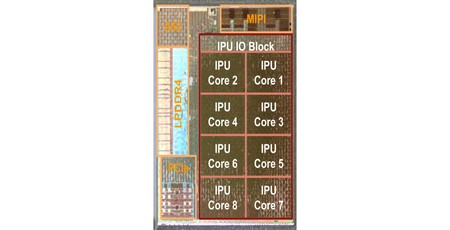Google activates its Pixel Visual Core chip in Android 8.1 preview
November 28, 2017 | 11:34
Companies: #google

Google has released the final preview of Android Oreo 8.1, an update to its Linux-based mobile platform which will activate the Pixel Visual Core co-processor built into the company's Pixel 2 smartphones for the first time.
Unveiled back in October, the Pixel Visual Core marks the first time a Google-designed co-processor has found its way into one of the company's consumer products. An eight-core Image Processing Unit (IPU) connected to an ARM Cortex-A53 general-purpose processor and PCI Express and Mobile Industry Processor Interface (MIPI) links, the Visual Core has been present but deactivated in every single Pixel 2 smartphone the company has sold.
In Android Oreo 8.1, though, the chip will be activated for the first time. Announced as part of the final developer preview release ahead of public availability, the software update will activate the Pixel Visual Core - though only through a 'new developer option' rather than as an on-by-default feature.
'Using Pixel Visual Core, HDR+ [High Dynamic Range Plus photographic processing] can run 5x faster and at less than one-tenth the energy than running on the application processor,' explained Google's Ofer Shacham and Masumi Reynders in the original technology announcement. 'HDR+ will be the first application to run on Pixel Visual Core. Notably, because Pixel Visual Core is programmable, we’re already preparing the next set of applications. The great thing is that as we port more machine learning and imaging applications to use Pixel Visual Core, Pixel 2 will continuously improve.'
The developer toggle in Android 8.1 will allow early adopters to activate accelerated HDR+ using the Pixel 2's native camera app, with support for third-party camera packages using the Android camera application programming interface (API) to follow. Thus far, though, Google has not indicated what other tasks it plans to offload to the Pixel Visual Core, a device which boasts performance in the range of three trillion operations per second (TOPS) through its 4,096 Halide and TensorFlow compatible arithmetic and logic units (ALUs).

MSI MPG Velox 100R Chassis Review
October 14 2021 | 15:04








Want to comment? Please log in.